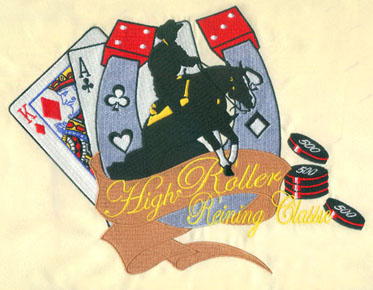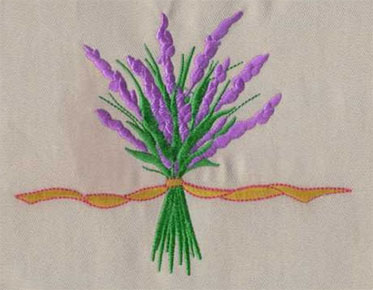Step By Step from Eagle Digitizing: How To Remove Embroidery from a Garment
With the help of a professional
embroiderer and digitizer, you can
create amazing embroidery products. Nevertheless, it is essential to note that the
removal of embroidered patches that have been incorrectly applied also requires
careful removal methods to avoid any adverse consequences.
Embroidery is a beautiful adornment to
clothing, but if you need to remove it from your shirt or other article of
clothing, there are ways to do so. We're here to help you learn how to remove
embroidery without tearing the fabric itself or making the design look
terrible.
Can you get rid of the embroidery?
Yes.
Given the high mileage of embroidery,
it is overused for all the details of the feathers. In addition to design,
businesses also use embroidery as a marketing strategy to place their flags and
slogans on all commercial goods.
While the inveterate Ensign may appeal
to some, others may wish to remove the brand from the clothing, which adds to
its range and style.
For now, you don't have to worry;
Below, we'll look at how to smoothly remove embroidery from clothing. While
embroidering garbage is not rocket wise, you need to be conservative and
careful in performing the garbage manner so as not to damage the fabric. All
you need is a lot of introductory tools and a lot of tolerance and continuity to
achieve the required results.
Will removing the embroidery damage
the costume? Yes, and no.
Flashback, embroidery designs are made
up of hundreds of thousands of aches, which means the fabric will have many
holes underneath the design. So once you remove the fabric (no matter how
precise), the holes will inevitably be exposed.
Now, the visibility and height of the
holes will vary from fabric to fabric. Most of the time, though, you will be
able to regain the costume (if you precisely eliminate the pain). By following
many simple methods, you can significantly remove (or at least reduce) the
remaining hole sewing marks on the fabric. Also understand Cap digitization
How to remove embroidery from clothes?
As mentioned earlier, embroidery
design involves hundreds of thousands of pains. So, in order to fit out the
design, you basically have to cut out these thousands of vestments, right?
Fortunately, a convergent earth splitter and embroidery scissors are provided
with the request and can be effectively used to remove all feathers from
embroidery designs (with a degree of tolerance and care). These professional
tools are basically designed to improve the perfection of cutting cassores and
ensure the integrity of the fabric. The only problem is, these perfect tools
aren't really built for speed.
Sewing and Embroidery trash tools are
another specialty tool used to embroider trash. The tool has similar operation
to an electric clipper holder and features a short, sharp blade to shave the
vestment while keeping the fabric safe. If you are operating in a marketable
position or wish to remove large embroidery, this is the right tool.
From the tools mentioned above, there
are a number of other tools such as tweezer holders and other tools that can be
used to effectively remove embroidery from clothing.
So, let's start the progeny
1. Razor
A razor isn't the most shocking tool,
since most people can remove embroidery from a costume. In practice, though, it
is still a very effective tool for precisely removing embroidery from all
fabric feathers (carefully, of course). What's more, you can use any and all
disposable or applicable razor feathers (unless they are sharp). Then there is
the method of using a razor to remove the embroidery from the costume.
2. Seam soil breaker
The confluence splitter is a perfect
tool for removing vestments and seams. This small looking tool has a sharp
blade inside its hooked part that can tear and hurt the vestment. It is a
convenient, precise and adaptable tool that you need to effectively remove
embroidery from any garment. To make the operation really more, you can use
tweezers and large needle supports to wrap around this tool. Ok, let's look at
the way to remove embroidery using a confluence splitter
Turn out your clothes. Flashback,
whenever you remove embroidery from any piece of clothing, always start with
the outside. As you turn the fabric, you will see the amount of pain you want
to cut and avoid pinching holes in the fabric.
The next step is to remove the
stabilizer from the back of the embroidery (if using any backing or
stabilizer). Cut as many stabilizers as possible before cutting vestments
Once the backing or stabilizer is cut,
it's time to start cutting the confluence. First, gently push the soil
splitters below the spool pain, then lift the soil splitters at a slight Angle
to cut them. There is no standard number of pains, you can cut in one go and
you have to develop a fashion modus operandi based on the type of fabric and
the complexity of the stitching. However, if you are using delicate fabric, it
is fashionable to cut many at once to avoid damaging the fabric. Or, for thick,
tough fabrics, you can take a lot of pain.
After cutting the garment for the
embroidery part, check to see if the vestment has loosened a little by turning
the fabric to the right. By now the vestments must have loosened and begun to
fray.
Now, exactly start pulling the pain
from the front of the cloth. Spare and conservative, do not damage the fabric.
Just push the convergent earth splitters under the pain and subtly pull them.
The holder of the tweezers can significantly help ease the pulling process.
Alternatively, you can use churros to pull the vestments easily. Flashback, at
any stage, if you encounter resistance while pulling the vestment, do not exert
any force. Simply turn the fabric inside and cut out many vestments that might
provide resistance when pulling the thread.
Once this section has been cleared,
turn the fabric inside out again and start cutting the wire for the other
section. Flashback, section work is a stylish way to gently remove embroidery
without damaging the fabric.



